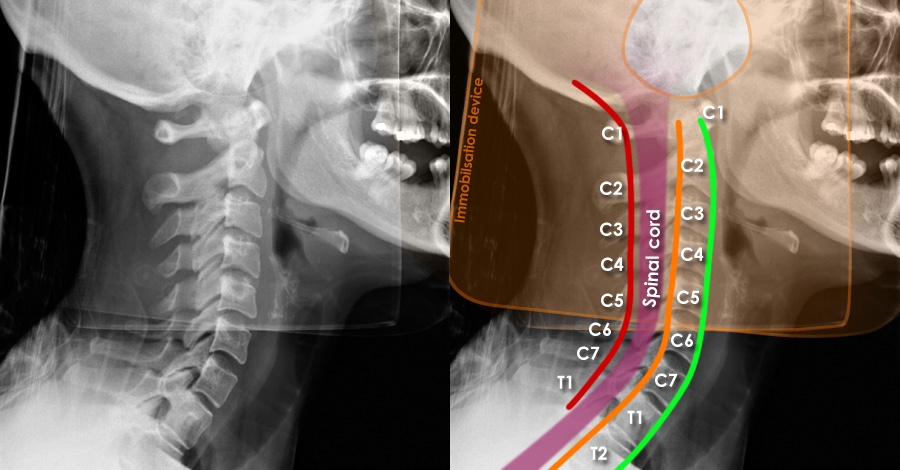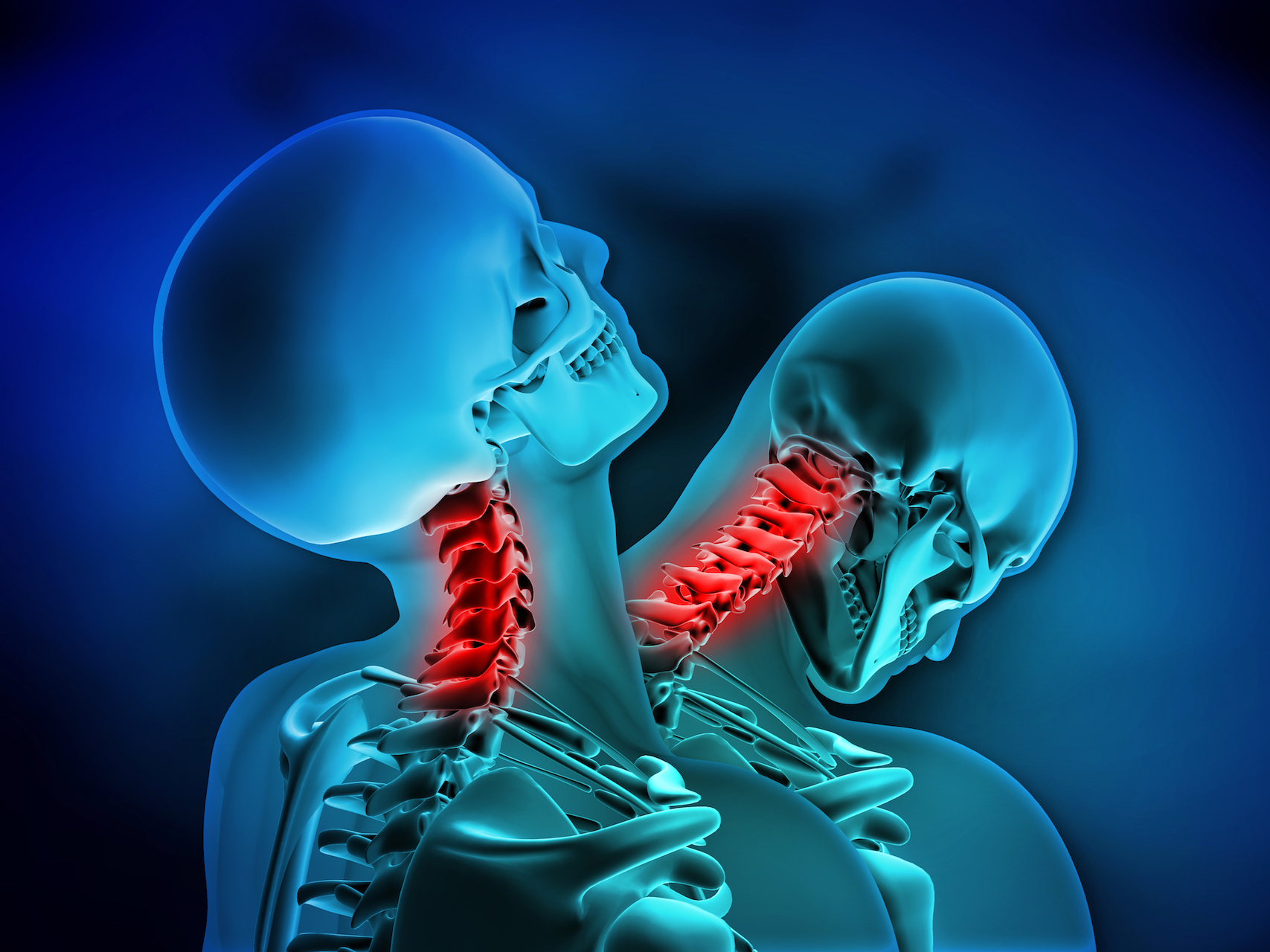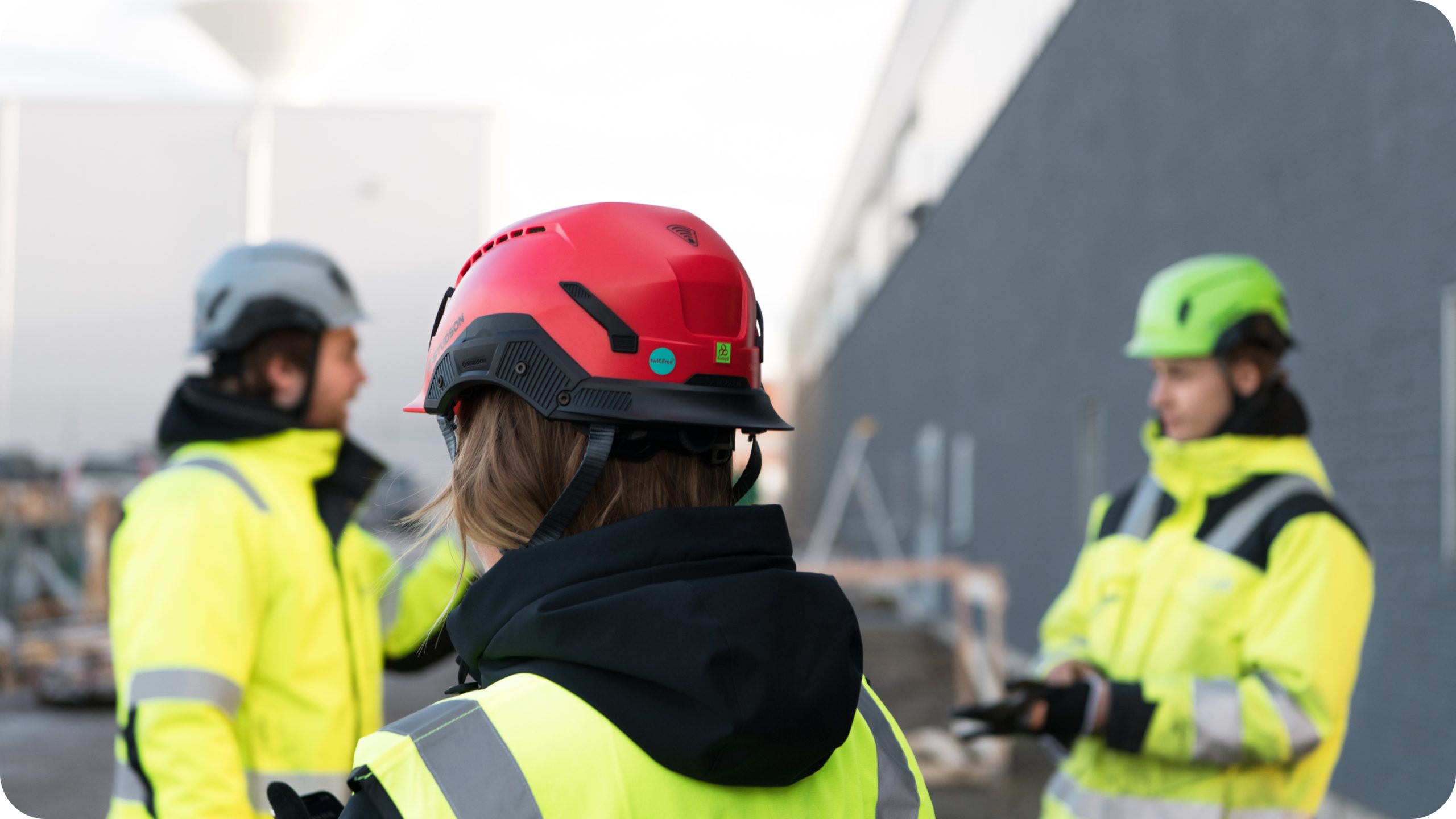Fatal Workplace Accident Reveals Unprecedented Spinal Injury Pattern: A Critical Case Study in Occupational Safety
A tragic workplace incident in India has provided the medical community with the first documented case of a rare and fatal cervical spine fracture pattern, highlighting critical gaps in both workplace safety protocols and medical classification systems. This case study serves as a sobering reminder of the devastating consequences that can result from workplace accidents involving falling objects.

The Tragic Incident: When Safety Protocols Fail

In September 2022, the Journal of Orthopaedic Case Reports documented a workplace accident that would prove both medically unprecedented and tragically fatal. An 18-year-old male worker in India was performing routine duties when a heavy metallic object—described as either a pipe or beam—fell from an elevated position and struck him directly on the frontal region of his head.
The impact was immediate and catastrophic. The young worker lost consciousness instantly, fell into severe respiratory distress, and entered a state of shock that would ultimately prove fatal despite intensive medical intervention. Emergency medical responders arrived quickly, performing rapid intubation and stabilization procedures while applying a rigid cervical collar before transporting him to the nearest hospital facility.
This incident represents more than just another workplace accident statistic—it has become a landmark case in medical literature due to the unique nature of the spinal injury sustained and its implications for both occupational safety standards and medical understanding of cervical spine trauma.
Medical Findings: An Unprecedented Injury Pattern
Upon arrival at the emergency department, the patient underwent immediate non-contrast computed tomography (NCCT) of the cervical spine to assess the extent of his injuries. The imaging results revealed a fracture pattern that had never before been documented in medical literature, creating significant challenges for both classification and treatment planning.
The primary injury involved an isolated retropulsion of the C5 vertebral body into the spinal canal—a condition where the vertebral body is compressed and displaced backward into the space normally occupied by the spinal cord. What made this case particularly unusual was the absence of typical associated injuries that normally accompany such severe spinal trauma.
Remarkably, the imaging showed no displacement of facet joints or pedicle fractures, which are commonly seen in severe cervical spine injuries. Additionally, a concurrent fracture was identified in the postero-superior portion of the C6 vertebral body, creating a complex injury pattern that defied existing medical classification systems.
This specific combination of injuries—an axial flexion-compression trauma resulting in vertebral body retropulsion without the typical accompanying structural damage—had never been recorded in medical literature, making this case the first of its kind to be documented and studied.
The Biomechanics of Catastrophic Spinal Injury
To understand the severity and rarity of this injury, it’s essential to examine the biomechanics involved in cervical spine trauma. The subaxial cervical spine, comprising vertebrae C3 through C7, is designed for mobility and is responsible for most neck movement. However, this flexibility also makes it vulnerable to certain types of trauma.
When the heavy metallic object struck the worker’s head, it created what medical professionals describe as a “nutcracker effect.” The downward force was transmitted through the skull and into the cervical spine, creating an axial compression that literally crushed the C5 vertebral body between the adjacent vertebrae above and below it.
The force was so significant that it caused the C5 vertebral body to collapse and be driven backward into the spinal canal—the protected space where the spinal cord travels from the brain to the lower body. This retropulsion created immediate compression of the spinal cord, resulting in the rapid neurological deterioration and respiratory compromise that characterized the patient’s clinical presentation.
The secondary fracture at C6 suggests that the force was distributed across multiple vertebral levels, indicating the tremendous energy involved in this traumatic event. The fact that such devastating injuries could occur without the typical associated structural damage highlights the complex and sometimes unpredictable nature of spinal trauma.
Treatment Challenges and Fatal Outcome
Despite rapid emergency response and immediate medical intervention, the severity of the patient’s injuries presented insurmountable clinical challenges. Upon arrival at the hospital, he was hemodynamically unstable and suffering from respiratory insufficiency that required mechanical ventilation support.
Medical teams applied cervical traction in an attempt to reduce pressure on the spinal cord and stabilize the fracture pattern. This standard treatment approach for cervical spine injuries involves applying controlled force to separate the vertebrae and potentially reduce compression on neural structures.
However, the unique nature of this injury pattern, combined with the patient’s rapidly deteriorating condition, severely limited treatment options. The compression of the spinal canal by the retropulsed vertebral body created immediate and severe neurological compromise that could not be effectively addressed through conservative measures alone.
Surgical intervention, which might normally be considered for such injuries, was deemed impractical given the patient’s unstable condition and the complexity of the fracture pattern. The combination of respiratory failure, hemodynamic instability, and severe neurological compromise created a clinical scenario where aggressive surgical treatment carried prohibitive risks.
Despite all medical efforts, the patient died two days after the initial injury, highlighting the devastating potential of workplace accidents involving falling objects and the critical importance of prevention strategies.
Implications for Medical Classification Systems
This case has significant implications for medical understanding and classification of cervical spine injuries. Current classification systems, including the Allen & Ferguson system, the Subaxial Injury Classification System (SLICS), and the AO Spine classification, are based on common injury patterns involving facet joint dislocations, pedicle fractures, burst fractures, and ligamentous injuries.
However, this patient’s injury pattern—isolated C5 retropulsion with intact facets and pedicles—did not fit into any existing classification category. This gap in medical classification systems has important implications for both diagnosis and treatment planning, as classification systems help guide clinical decision-making and surgical approaches.
The authors of the case report emphasized that this unprecedented injury pattern highlights the limitations of current classification frameworks and suggests the need for more comprehensive systems that can accommodate atypical presentations. This is particularly important as medical understanding of spinal trauma continues to evolve and new injury patterns are identified.
Critical Workplace Safety Lessons
This tragic case provides several crucial lessons for workplace safety management and occupational health protection. The primary lesson is the absolute critical importance of preventing objects from falling in work environments, particularly in areas where workers are present below elevated materials or equipment.
Proper safety protocols must include mandatory use of certified safety helmets in all environments where overhead hazards exist. However, this case also demonstrates that even proper personal protective equipment may not be sufficient protection against large, heavy falling objects traveling at significant velocity.
Workplace safety managers must implement comprehensive hazard identification and control measures that prevent objects from becoming airborne hazards in the first place. This includes proper securing of materials, tools, and equipment at elevated work sites, regular inspection of overhead storage and work areas, and strict protocols for working beneath suspended loads.
Training programs must emphasize the recognition of overhead hazards and the importance of maintaining awareness of potential falling object risks. Workers should be educated about the devastating potential of even brief exposure to overhead hazards and the importance of following safety protocols consistently.
Emergency Response and Medical Awareness
This case also highlights the importance of proper emergency response protocols for suspected spinal injuries. When neck or spinal trauma is suspected, immediate stabilization and careful handling are critical to prevent additional injury during transport and initial medical care.
Emergency responders and medical teams must be aware that severe spinal injuries can present with atypical patterns that may not fit standard classification systems. Comprehensive imaging studies, including both CT and MRI when available, are essential for accurate diagnosis and treatment planning.
The case also emphasizes the importance of rapid transport to facilities equipped with specialized imaging capabilities and experienced trauma teams. Time-sensitive interventions may be crucial for optimizing outcomes in severe spinal trauma cases.
Prevention Strategies and Risk Management
Effective prevention of similar workplace accidents requires a multi-layered approach to safety management. Employers must conduct thorough hazard assessments that specifically address overhead risks and falling object potential. This includes regular inspection of storage areas, work platforms, and any locations where materials or equipment are positioned above worker activity areas.
Engineering controls should be the primary focus of prevention efforts, including proper securing systems for overhead materials, catch nets or barriers to prevent falling objects from reaching worker areas, and design modifications that eliminate or minimize overhead hazards.
Administrative controls, including training programs, safety protocols, and work procedures, provide additional layers of protection. However, these should supplement, not replace, engineering solutions that address hazards at their source.
Personal protective equipment, while important, should be considered the final layer of protection rather than the primary safety strategy. This case demonstrates that even properly worn safety equipment may not provide adequate protection against large, heavy falling objects.
Conclusion: Learning from Tragedy
The tragic death of this young worker serves as a powerful reminder of the critical importance of comprehensive workplace safety programs and the devastating consequences that can result from safety failures. The unprecedented nature of his spinal injury has contributed valuable information to medical understanding while highlighting gaps in current classification systems.
For occupational safety professionals, this case underscores the absolute necessity of preventing falling object hazards through comprehensive hazard identification, engineering controls, and rigorous safety protocols. The fatal outcome demonstrates that some workplace accidents can result in injuries so severe that even immediate medical intervention cannot prevent tragic consequences.
The medical community’s documentation and analysis of this case will help improve future diagnosis and treatment of similar injuries, while the workplace safety lessons learned must be applied to prevent similar tragedies from occurring. The young worker’s death, while tragic, can serve as a catalyst for improved safety standards and medical understanding that may help protect others in the future.

Ethan Blake is a skilled Creative Content Specialist with a talent for crafting engaging and thought-provoking narratives. With a strong background in storytelling and digital content creation, Ethan brings a unique perspective to his role at TheArchivists, where he curates and produces captivating content for a global audience.
Ethan holds a degree in Communications from Zurich University, where he developed his expertise in storytelling, media strategy, and audience engagement. Known for his ability to blend creativity with analytical precision, he excels at creating content that not only entertains but also connects deeply with readers.
At TheArchivists, Ethan specializes in uncovering compelling stories that reflect a wide range of human experiences. His work is celebrated for its authenticity, creativity, and ability to spark meaningful conversations, earning him recognition among peers and readers alike.
Passionate about the art of storytelling, Ethan enjoys exploring themes of culture, history, and personal growth, aiming to inspire and inform with every piece he creates. Dedicated to making a lasting impact, Ethan continues to push boundaries in the ever-evolving world of digital content.
